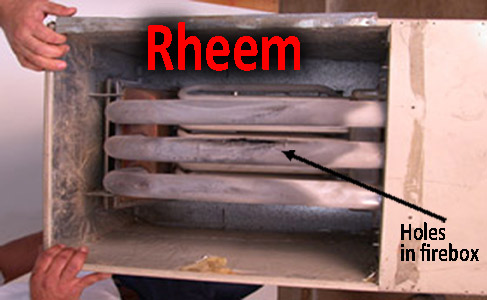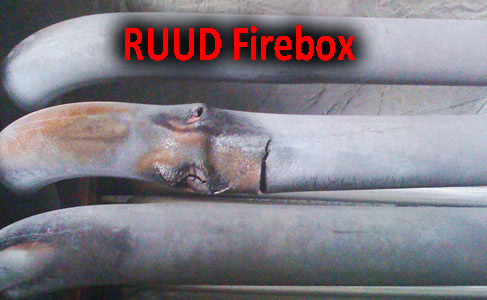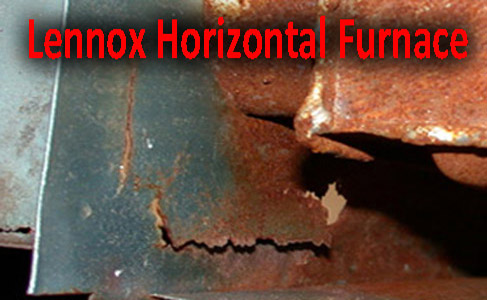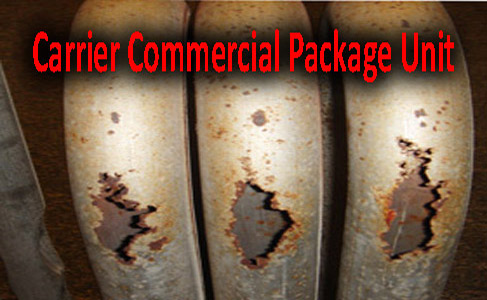Air Conditioning Terms: A Detailed Linguistic Directory of Heating & Air Conditioning Terminology
These are common terms in the heating, ventilation and air conditioning industry. These will be useful when dealing with your heating and air conditioning contractor and making sense from what they are telling you.
A B C D E F G H I J K L M N O P Q R S T U V W X Y Z
[A]
Absorption Cycle:
Absorption chillers differ from mechanical vapor compression chillers in that they utilize a thermal or chemical process to produce the refrigeration effect necessary to provide chilled water. There is no mechanical compression of the refrigerant taking place within the machine as occurs within more traditional vapor compression type chillers. Most commercial absorption chillers utilize lithium bromide (a salt) and water as the fluid pair. This is used in commercial air conditioning systems.
AccuClean™:
Brand name for American Standard Heating & Air Conditioning's whole home air filtration system that removes up to 99.98% of airborne allergens from the filtered air in your home.
AccuLink™:
Communicating System AccuLink™ Communicating System is American Standard’s integrated and self-configuring system that makes it possible for your components to automatically talk to each other. It lets you remotely adjust settings and provides proactive alerts so you know your system is working at its best.
Accurator:
A piston type metering device that feeds the proper amount of liquid refrigerant into the evaporator. These are no longer allowed on residential systems as they are not as accurate and efficient as thermostatic expansion valves.
Air Change:
The amount of air required to completely replace the air in a room or building; not to be confused with re-circulated air. If a room is 8’ x 10’ x 10’ it contains 800 cubic feet of air. 1 change per minute would require 800 cubic feet of airflow per minute.
Air Cleaner (also Air Filtration System):
A device that removes allergens, pollutants and other undesirable particles from air that is heated or cooled.
Air Conditioner:
Cooling and dehumidifying equipment. This is the entire system, not just the outdoor unit. The outdoor unit is typically a “condensing unit” and is only a single part of a standard home air conditioning split system.
Air Cooled:
Uses a fan to discharge heat from the condenser coil to the outdoors. This is an air to air transfer of heat.
Air-Cooled System:
A type of air conditioning system that uses Freon as a refrigerant and air as a condensing medium. Typically, a split system air-cooled condenser is located outside and refrigerant lines are piped to it from the indoor unit. This is the most common system used in home building. Package units that are air cooled are the most common type for commercial. Commonly referred to as all in one systems.
Air Diffuser:
Air distribution outlet or grille designed to direct airflow into desired patterns.
Air Flow:
The distribution or movement of air.
Air Handler:
The portion of the central air conditioning or heat pump system that moves heated or cooled air throughout a home's ductwork. In some systems a furnace handles this function.
Allegiance:
Brand name for the American Standard Heating & Air Conditioning family of air conditioners.
Allergen:
A substance that causes an allergic reaction. It includes dust, pollen, pet hair and dander, dust mites, mildew, lint, fungus, most tobacco smoke, cooking grease and bacteria.
All-In-One System (also Packaged System):
An air conditioning and/or heating system in which all components are located in one cabinet. Used in certain localities and for certain building types, the all-in-one system is installed either beside or on Topof your home.
Annual Fuel Utilization Efficiency (AFUE):
A rating that denotes the efficiency of gas heating equipment. It is the amount of heating your equipment delivers for every dollar spent on fuel. A higher rating indicates more efficient equipment. This rating is calculated in accordance with the Department of Energy test procedures.
Asbestos:
A common mineral used to for insulation in ducting and heating and air conditioning systems prior to 1978. Long known for its cancer causing abilities asbestos is banned from use in new construction. Asbestos can be visually identified by its white cardboard like appearance and often aluminum coated silver appearance.
Auto Changeover:
A control package that provides for automatic switching from a primary air conditioning system to a backup in the event of a failure of the primary system.
[B]
Balance Point:
An outdoor temperature, usually between 30° F and 45° F, at which a heat pump's output exactly equals the heating needs of the home. Below the balance point, supplementary electric resistance heat is needed to maintain indoor comfort.
Blower:
An air handling device for moving air in a distribution system. This is located in the indoor section (furnace or air handler). These typically utilize a forward curve blower wheel rather than a fan blade.
BTU (British Thermal Unit):
In scientific terms, it represents the amount of energy required to raise one pound of water one degree Fahrenheit. One BTU is the equivalent of the heat given off by a single wooden kitchen match. For your home, it represents the measure of heat given off when fuel is burned for heating, or the measure of heat extracted from your home for cooling.
[C]
Capacity:
The ability of a heating or cooling system to heat or cool a given amount of space. For heating, this is usually expressed in BTU's. For cooling, it is usually given in tons.
Carbon Monoxide:
Carbon Monoxide (CO) is a colorless, odorless gas produced by burning any fuel. CO is poisonous and symptoms of CO poisoning are similar to those of the flu: headaches, fatigue, shortness of breath, nausea and dizziness. The Consumer Product Safety Commission (CPSC) recommends a yearly, professional inspection.
Central Air Conditioner System:
System in which air is treated at a central location and carried to and from the rooms by one or more fans and a system of ducts.
Centrifugal Compressor:
A type of compressor used in vapor compression refrigeration cycles where a rotating impeller is the device which compresses the refrigerant vapor. The vapor is drawn into the impeller axially, and is discharged radially after energy is added to the vapor within the impeller.
CFM (Cubic Feet per Minute):
The abbreviation for cubic feet per minute, commonly used to measure the rate of air flow in an air conditioning system.
Charge:
Amount of refrigerant in a system.
Chilled Water System:
A type of air conditioning system that has no refrigerant in the unit itself. The refrigerant is contained in a chiller, which is located remotely. The chiller cools water, which is piped to the air conditioner to cool the space.
Comfort Air Conditioning:
Comfort air conditioning systems are designed for the comfort of people, not the protection of computer-based electrical systems. Unlike people, computers generate dry (sensible) heat, but not humidity. Only about 60-70% of a comfort system's total capacity is dedicated to the removal of sensible heat, while 30-40% is for dehumidification. With a large percentage of their total capacity devoted to the removal of moisture, comfort systems can lower room humidity far below acceptable standards. A larger comfort system is required to obtain the same sensible capacity as a precision cooling system.
Comfort-R™:
Comfort-R™ is American Standard Heating & Air Conditioning's process for reducing your home's humidity and maintaining a comfortable temperature. Set by the dealer, Comfort-R™ ramps up the airflow in your home—making your home cooler and more comfortable faster
Compressor:
The pump that moves the refrigerant from the indoor evaporator to the outdoor condenser and back to the evaporator again. The compressor is often called "the heart of the system" because it circulates the refrigerant through the loop. The compressor maintains adequate pressure to cause refrigerant to flow in sufficient quantities in order to meet the cooling requirements of the system and your home.
Condensation:
The process by which a gas is changed into a liquid at constant temperature by heat removal.
Condenser:
A device that transfers unwanted heat out of a refrigeration system to a medium (either air, water, or a combination of air and water) that absorbs the heat and transfers it to a disposal point. There are three types of condensers: air-cooled condensers, water-cooled condensers, and evaporative condensers. The evaporative condenser uses a combination of air and water as its condensing medium. Most residential systems have an air-cooled condenser. The coil dissipates heat from the refrigerant, changing the refrigerant from vapor to liquid. In American Standard units, the coil is called Spine Fin™.
Condenser Coil:
A series or network of tubes filled with refrigerant, normally located outside the home, that removes heat from the hot, gaseous refrigerant so that the refrigerant becomes liquid again.
Condensing Unit:
Part of a refrigerating mechanism which pumps vaporized refrigerant from the evaporator, compresses it, liquefies it in the condenser and returns it to the refrigerant control. The outdoor portion of a split system air conditioner contains the compressor and outdoor coil ignoring the reverse cycle operation, also the outdoor in a heat pump system.
COP (Coefficient of Performance):
This is a measure of the energy efficiency of a chiller.
Cooling Capacity:
A measure of the ability of a unit to remove heat from an enclosed space. COP - Coefficient of Performance of a heat pump means the ratio of the rate of useful heat output delivered by the complete heat pump unit (exclusive of supplementary heating) to the corresponding rate of energy input, in consistent units and under operating conditions.
Cooling Load:
Heat which flows into a space from outdoors and/or indoors.
[D]
Damper: (Dampener)
Found in ductwork, this movable plate opens and closes to control airflow. Dampers are used effectively in zoning to regulate airflow to certain rooms.
Defrost Cycle:
The process of removing ice or frost buildup from the outdoor coil during the heating season.
Dehumidification:
The reduction of water vapor in air by cooling the air below the dew point; removal of water vapor from air by chemical means, refrigeration, etc.
Department of Energy (DOE):
A federal agency that sets industry efficiency standards and monitors the use of various energy sources.
Direct Expansion Systems:
One of two types of basic cooling media (the other is chilled water). Direct expansion systems utilize freon for cooling and dehumidification. The three most common methods of heat rejection are air cooled, water cooled and glycol cooled.
Direct Vent:
Pulls outside air for combustion and vents combustion gases directly outside.
Downflow:
Refers to a type of precision air conditioning system that discharges air downward, directly beneath a raised floor, commonly found in computer rooms and modern office spaces.
Downflow Furnace:
A furnace that pulls in return air from the Topand expels warm air at the bottom.
Duct:
A pipe or closed conduit made of sheet metal, fiberglass board, or other suitable material used for conducting air to and from an air handling unit.
Ductwork:
Pipes or channels that carry air throughout a building. These can be made of a flexible Nylon-Teflon tube with a helical metal coil or can be made of asbestos, metal or a hard fiberglass insulating medium.
[E]
Economizer:
In a chiller with a two-stage centrifugal compressor, the discharge from the first stage impeller and the inlet to the second stage impeller are at a pressure level approximately half way between the cooler pressure and condenser pressure. With this arrangement, an economizer may be used. This is a shell within which refrigerant liquid from the condenser drops down to the interstage pressure, flashing off some of the refrigerant which is drawn directly into the second stage impeller. This reduces the amount of refrigerant which has to be compressed by the first stage impeller, improving the refrigeration cycle efficiency.
Electronic Air Cleaner:
An electronic device that filters out large particles and contaminants in indoor air. It then electronically pulls out tiny particles that have been magnetized, such as viruses and bacteria, drawing them to a collector plate.
Emergency Heat (Supplemental or Auxillary Heat):
The back-up heat built into a heat pump system.
Energy Star:
A program developed by the Environmental Protection Agency (EPA) in order to reduce the nation's energy consumption. Energy Star® qualified heating equipment can be up to 15 percent more efficient than standard models. Energy Star-qualified cooling equipment can be up to 7 percent more efficient than minimum-standard equipment.
Energy Efficiency Ratio (EER):
Means the ratio of the cooling capacity of the air conditioner in British Thermal Units per hour, to the total electrical input in watts under ARI-specified test conditions.
Enthalpy:
Heat content or total heat, including both sensible and latent heat. The amount of heat contained in a refrigerant at any given temperature with reference to -40°F.
Evaporator:
Absorbs heat from the surrounding air or liquid and moves it outside the refrigerated area by means of a refrigerant. It is also known as a cooling coil, blower coil, chilling unit or indoor coil.
Evaporator Coil:
A series or network of tubes filled with refrigerant located inside the home that take heat and moisture out of indoor air as liquid refrigerant evaporates.
[F]
Fahrenheit (Represented as degrees "F"):
The scale of temperature measurement most commonly used in the United States of America.
Filter:
A device used to remove dust and other particles from air for the purposes of reducing the load on the respiratory system and to protect the HVAC equipment. Filters vary greatly in particle arrestance; the higher the MERV rating, the better the filter.
Freedom:
Brand name for the American Standard Heating & Air Conditioning family of gas and oil furnaces.
Free Cooling System:
Typically a water cooled or glycol cooled system with an additional coil that provides chilled water cooling when the outdoor ambient is cold thereby reducing or eliminating compressor operation. Provides efficient system operation in Nothern climates.
Free Delivery:
There are no ducts and the unit may be installed in the field without ducts if needed. Ground-Source - The ground or soil below the frost line is being used as the heat source or heat sink for a heat pump.
Freon:
A general term used to identify, any of a group of partially or completely halogenated simple hydrocarbons containing fluorine, chlorine or bromine, which are used as refrigerants. Common designations R12 (older cars), R22 (pre 2010 home and business air conditioners), R410 (2010 and newer home and business air conditioners), R134a (modern cars), R717 (ammonia air conditioners). Propane is a Freon, but has been banned because of flammability. Carbon dioxide has appeared on the scene and looks to be the next long term environmentally friendly refrigerant.
Furnace:
That part of an home comfort system which converts gas, oil, electricity or other fuel into heat for distribution within a structure.
[G]
Generator:
In an absorption cycle, the vessel in which the lithium bromide solution is concentrated by boiling off the previously absorbed water.
Glycol-Cooled System:
A type of air conditioning system that uses Freon as a refrigerant and a water/glycol solution as a condensing medium. Typically, the glycol-cooled condenser is located inside the air conditioner with the rest of the refrigeration components. Water/glycol is piped to the unit from a dry cooler or other suitable source. The glycol keeps the solution from freezing during winter operation.
Ground Water-Source:
Water from an underground well is being used as the heat source or heat sink for a heat pump.
[H]
Heat Exchanger:
A device for the transfer of heat energy from the source to the conveying medium.
Heat Gain:
The amount of heat gained, measured in BTU's, from a space to be conditioned, at the local summer outdoor design temperature and a specified indoor design condition.
Heat Loss:
The amount of heat lost, measured in BTU's from a space to be conditioned, at the local winter outdoor design temperature and a specified indoor design condition.
Heat Pump:
An air conditioner that contains a reversing valve that allows it to alternate between heating and cooling. An air conditioner that works in forward and reverse.
Heat Source:
A body of air or liquid from which heat is collected. With any heat pumps, the air outside the home is used as the heat source during the heating cycle.
Heat Transfer:
The movement of heat from one place to another, between two substances, or within a substance.
Heating Capacity:
The rate at which a specific device can add substantial heat to a substance, expressed in BTUh (British Thermal Units per hour).
Heating Seasonal Performance Factor (HSPF):
means the total heating output of a heat pump in British Thermal Units during its normal usage period for heating divided by the total electrical energy input in watt-hours during the same period.
HEPA filter:
A High Efficiency Particulate Absorbing filter. A HEPA filter removes particles from the air by trapping them as air flows through.
Heritage:
Brand name for the American Standard Heating & Air Conditioning family of heat pumps. Heritage Hybrid™ comfort system A home comfort system that combines a Heritage® heat pump with a gas furnace. For areas with colder temperatures, combining electric heating (heat pump) with gas heating (furnace) lets you choose from two fuel sources in order to respond to fluctuations in utility costs.
Horizontal Furnace:
A furnace that lies on its side, pulling in return air from one side and expelling warm air from the other.
HSPF:
Heating Seasonal Performance Factor. Refers to the efficiency of the heating mode of heat pumps over an entire heating season. The higher the number, the more efficient the unit.
HVAC:
Heating, Ventilation, and Air Conditioning.
Humidification:
The process of adding moisture to the air within a space.
Humidistat:
A device designed to regulate humidity input by reacting to changes in the moisture content of the air.
Humidifier:
A device that adds moisture to dry indoor air during wintertime and in hot, dry climates.
Humidity:
The amount of moisture in the air. Air conditioners remove moisture for added comfort.
[I]
Indoor Unit:
This is usually located inside the house and contains the indoor coil, fan, motor, and filtering device, sometimes called the air handler.
Indoor Coil:
Refrigerant containing portion of a fan coil unit similar to a car radiator, typically made of several rows of copper tubing with aluminum fins. The other, less visible half of your outdoor unit. It's attached to your furnace or air handler. As indoor air flows across it, heat and moisture are drawn out, leaving air that is cool, comfortable and conditioned.
Indoor/Outdoor System (also Split System):
Refers to a comfort system consisting of components in two locations. Common examples include an outside unit, such as an air conditioner, and an indoor unit, such as a furnace with a coil.
Infiltration:
Air flow into a space usually through walls and leaks around doors and windows.
Insulation:
Any material that slows down the transfer of heat.
Integrally Controlled Motor (ICM):
A variable-speed motor that operates at low RPM when possible for efficiency and quiet operation. ICM motors are more than 90% efficient versus 60% efficiency for conventional motors.
Integrated AccuClean™:
Technology An American Standard Heating & Air Conditioning whole home air filtration system that is built into select furnaces and air handlers. It removes up to 99% of airborne allergens from filtered air, while saving space and offering an easy, all-in-one installation.
Isolation Valves:
Valves used for the transfer and isolation of refrigerant charge in the cooler or condenser, allowing refrigerant to be stored inside a chiller during servicing.
[J]
No Definitions at this time.
[K]
(K) Factor:
The electrical insulating value of any material. Also known as conductivity.
Kilowatt (kW):
Equal to 1,000 watts. Kilowatt-hour (kWh) - A common unit of electrical consumption
[L]
Latent Cooling Capacity:
An A/C system's capability to remove moisture from the air.
Latent Heat:
The heat energy needed to change the state of a substance (i.e.: from a liquid to a gas) but not it's temperature. This is not expressed on the thermostat. It is the amount of heat contained within the air due to the amount of moisture contained within the air. The more moisture in the air, the more heat that it contains. The reading is more important to comfort than sensible heat (the thermostat reading).
LCD:
An abbreviation for a screen type - Liquid Crystal Display. This is a low power consumption lit up screen and is common on nearly all electronic thermostats.
Load Calculation:
A mathematical design tool used to determine the heat gain and heat loss in a building so that properly sized air conditioning and heating equipment should be installed.
[M]
Matched System:
A heating and cooling system comprised of products that have been certified to perform at promised comfort and efficiency when used together, and used according to design and engineering specifications.
Microprocessor Controls:
A control system that uses computer logic to operate and monitor an air conditioning system. Microprocessor controls are commonly used on modern precision air conditioning systems to maintain precise control of temperature and humidity and to monitor the units operation.
[N]
Natural-Draft Furnace:
A furnace in which the natural flow of air from around the furnace provides the air to support combustion. It also depends on the pressure created by the heat in the flue gases to force them out through the vent system.
NATE:
North American Technician Excellence. It's the nationwide certification program for home heating and cooling technicians. It's the only certification that is recognized by the entire industry.
NFPA:
National Fire Protection Association. This is the organization that writes the National Electric Code.
[O]
Operating Cost:
The day-to-day cost of running your home comfort equipment, based on daily energy use.
Outdoor Coil/Condensing Unit:
The portion of a heat pump or central air conditioning system that is located outside the home and functions as a heat transfer point for collecting heat from and dispelling heat to the outside air.
[P]
Packaged System (also All-In-One System):
An air conditioning and/or heating system in which all components are located in one cabinet. Used in certain localities and for certain building types, the packaged system is installed either beside or on Topof your home.This is most common in commercial applications.
Packaged Unit:
A self-contained heating and/or air conditioning system.
Payback Analysis:
Overall measure of the efficiency and value of your home comfort system. By combining your purchase price and ongoing operating costs, a payback analysis determines the number of years required before monthly energy savings offset the purchase price.
Precision Air Conditioning:
Precision A/C systems are primarily designed for cooling electronic equipment, rather than people. These pre-packaged systems offer excellent reliability and typically have a high ratio of sensible-to-total cooling capacity and a high CFM/ton ratio.
Purge Device:
A device which removes air and water vapor from the refrigerant inside a chiller. A purge is a necessity in negative pressure designs, but is not necessary in positive pressure designs where air and water vapor are kept out of the system by the internal pressure.
Puron:
The designation for R410a by the Carrier corporation. R410a was introduced by Dupont for replacement of R22 and Dupont, to encourage it’s use, promoted private naming and private brand recognition.
[Q]
No Definitions at this time.
[R]
R-Value:
The heat insulating factor of insulation. The ‘R’ stands for resistance to heat flow. Insulation that is R30 will allow the same amount of heat through in 30 hours as would happen if there were no insulation.
Refrigerant:
A substance that produces a refrigerating effect while expanding or vaporizing. More commonly referred to as Freon.
Refrigerant Lines:
Set of two copper lines connecting the outdoor unit and the indoor unit. More commonly referred to as the “lineset”.
Register:
Combination grille and damper assembly covering an air opening or end of an air duct.
Relative Humidity:
The ratio of the amount of vapor contained in the air to the greatest amount the air could hold at that temperature. Normally expressed as a percentage. Most people are optimally comfortable at about 35-45% relative humidity. Above 55% relative humidity represents a significant mold and mildew danger. Below 20% relative humidity creates dry chapped itchy skin.
Return Air:
Air drawn into a heating-air conditioning air handling (furnace) unit after having been circulated from the heater's output supply to a room.
Reversing Valve:
A device in a heat pump that reverses the flow of refrigerant as the system is switched from cooling to heating. This is the primary difference between a heat pump and an air conditioning. A heat pump is merely an air conditioning that reverses the flow of Freon and causes the outdoor unit to become cold and the indoor unit (evaporator coil) to become hot.
[S]
SEER (Seasonal Energy Efficiency Ratio):
A rating that denotes the efficiency of air conditioning equipment. It is the amount of cooling your equipment delivers for every dollar spent on electricity. It is the ratio of cooling delivered by a system, measured in BTUs, to the dollar cost of the electricity to run the system, as measured in watt-hours. This ratio is determined using specified federal test procedures. The higher the SEER, the more efficient the unit. The more efficient the unit, the lower the operating cost. Probalby the best way to express this is to think about SEER as miles per gallon. The higher the MPG the less you pay at the pump.
SEET:
Seasonal Extreme Environmental Test. It's the American Standard testing facility for heating and air conditioning systems, where the equivalent of five years of operation is condensed into 16 weeks of testing under harsh conditions. American Standard Heating & Air Conditioning wants to ensure your new system will be as reliable as possible.
Sensible Cooling Capacity:
An A/C system's capability to remove heat from the air. (lower the temperature). This is the reading on the thermostat. (see latent heat).
Sensible Heat:
Heat energy that causes a rise or fall in the temperature of a gas, liquid or solid when added or removed from that material. Sensible heat changes the temperature by changing the speed at which the molecules move.
Setpoint:
The temperature to which a thermostat is set for desired comfort level.
Single Package:
A year-round heating and air conditioning system that has all of the components completely encased in one unit outside the home.
Spine Fin™:
A revolutionary technology that makes stronger, more efficient cooling coils. Spine Fin™ consists of thousands of tiny spines bonded to continuous aluminum refrigerant tubing. The tiny spines create a greater surface area, helping it to transfer more heat from your home, more efficiently. American Standard Heating & Air Conditioning features Spine Fin™ coils in our Allegiance® and Heritage® products.
Split System:
A central air conditioner consisting of two or more major components. The system usually consists of a compressor-containing unit and condenser, installed outside the building and a non-compressor - containing air handling unit installed within the building. This is the most common type of system installed in a home.
Storage Tank:
A steel shell in which the refrigerant charge for a chiller may be temporarily stored while the chiller is serviced.
Supercooled Liquid:
Liquid refrigerant cooled below its saturation point.
Subcooler:
This is a section of some condensers in which the temperature of the condensed refrigerant liquid is reduced. This improves the energy efficiency of the chiller.
Subcooling:
Creating a drop in temperature by removing sensible heat from a refrigerant liquid.
Superheated Vapor:
Refrigerant vapor heated beyond its saturation point.
Superheating:
Creating a rise in temperature by adding heat energy to a refrigeration vapor.
Supplementary Heat:
The auxiliary or emergency heat, usually electrical resistance heat, provided at temperatures below a heat pump's balance point.
Switchover:
A device in a heat pump that reverses the flow of refrigerant as the system is switched from cooling to heating.
[T]
Temperature:
The measure of the intensity of heat that a substance possesses.
Thermidistat:
Highly sophisticated programmable thermostat that senses the outdoor temperature, indoor air temperature, and indoor relative humidity. A microprocessor communicates with the heating and cooling equipment to determine the most efficient way to achieve perfect comfort. When used with a variable speed blower motor, this cite can reduce humidity even when cooling isn't necessary (as when the indoor temperature is 70 degrees but relative humidity is high, eg, when it's raining or foggy).
Thermostat:
A temperature control device, typically found on a wall inside that consists of a series of sensors and relays that monitor and control the functions of a heating and cooling system to achieve the level of comfort that you desire.
Thermostatic Expansion Valve:
A metering device that limits the amount of Freon allowed into the evaporator coil as a function of pressure and temperature. Most thermostatic expansion valves are set so that the Freon leaving the evaporator coil is between 41 and 43 degrees Fahrenheit.
Three-stage Heating:
Three-stage heating provides greater fuel efficiency and better comfort control by allowing for different modes of operation, depending on the situation. Most of the time, three-stage heating operates at an energy-saving speed, but can switch to other speeds when more heating is needed to provide comfort for your family.
Ton:
A unit of measurement used for determining cooling capacity. One ton is the equivalent of 12,000 BTUs per hour.
Tonnage:
The unit of measure used in air conditioning to describe the cooling capacity of a system. One ton of cooling is based on the amount of heat needed to melt one ton (2000 lbs.) of ice in a 24 hour period. One ton of cooling is equal to 12,000 Btu/hr.
Two-stage Heating / Two-stage Cooling :
Two-stage heating and cooling is considered to be more efficient, because it operates at a low, energy-saving speed most of the time. However, on days when more heating or cooling is required, it switches to the next stage for maximum comfort.
[U]
Upflow:
A type of air conditioning system that discharges air into the conditioned space via a top-mounted discharge plenum or through an overhead duct system.
Upflow Furnace:
A furnace that pulls return air in from the bottom and expels warm air from the top.
[V]
Vacuum Pump:
A pump used to remove air and moisture from a refrigeration system at a pressure below atmospheric pressure.
Vapor Barrier:
A moisture-impervious layer applied to the surfaces enclosing a humid space to prevent moisture travel to a point where it may condense due to lower temperature.
Vapor Seal:
A vapor seal is an essential part of preventing moisture infiltration into or migration out of a critical space, such as a data processing center or other room that contains sensitive electronic instrumentation. Essentially, a vapor seal is a barrier that prevents air, moisture, and contaminants from migrating through tiny cracks or pores in the walls, floor, and ceiling into the critical space. Vapor barriers may be created using plastic film, vapor-retardant paint, vinyl wall coverings and vinyl floor systems, in combination with careful sealing of all openings (doors and windows) into the room.
Variable Speed Motor:
The fan motor inside higher efficiency indoor and outdoor units is designed to change its speed based on your home's heating and air conditioning requirements. Working in conjunction with your thermostat, it keeps the appropriate-temperature air (e.g., warm air on cold days) circulating throughout your home, reducing temperature variances. The variable speed motor also increases dehumidification and is quiet because it runs at a lower speed most of the time. Plus, the consistent air circulation eliminates noisy startups and shutdowns.
Ventilation:
The process of supplying or removing air, by natural or mechanical means, to or from any space. Such air may or may not have been conditioned.
Ventilator:
A ventilator captures heating or cooling energy from stale indoor air and transfers it to fresh incoming air.
[W]
Water Cooled System:
A type of air conditioning system that uses Freon as a refrigerant and water as a condensing medium. Typically, the water-cooled condenser is located inside the air conditioner with the rest of the refrigeration components. Water is piped to the unit from a cooling tower or other suitable source.
Water Source:
Water is being used as the heat source or heat sink for a heat pump. Sources of underground water are wells and sources of surface water are lakes, large ponds, and rivers.
Watt:
A unit of power that equals one joule per second. Named after James Watt.
[X]
[Y]
Year-Round:
Air Conditioner which uses gas or oil for heating.
[Z]
Zone System:
A method of dividing a home into zones and enabling you to control the amount of comfort provided to each.
Zoning:
The practice of providing independent heating and/or cooling to different areas in a structure. Zoning typically utilizes a system controller, zoning dampers controlled by a thermostat in each zone, and a bypass damper to regulate static pressure in the supply duct.







